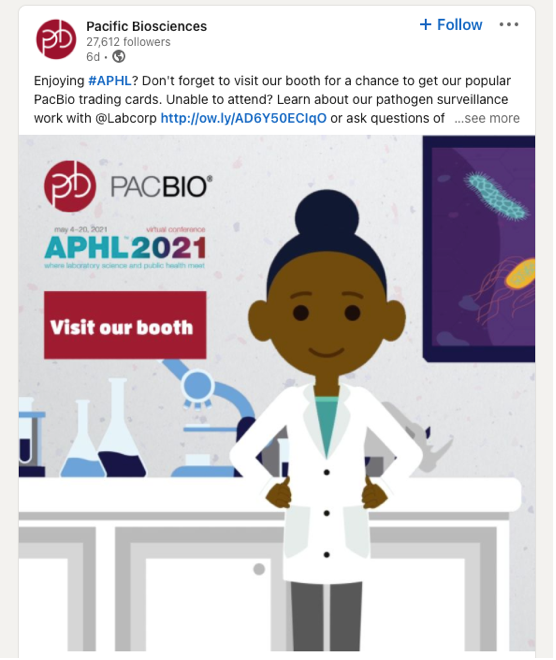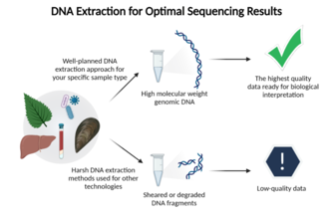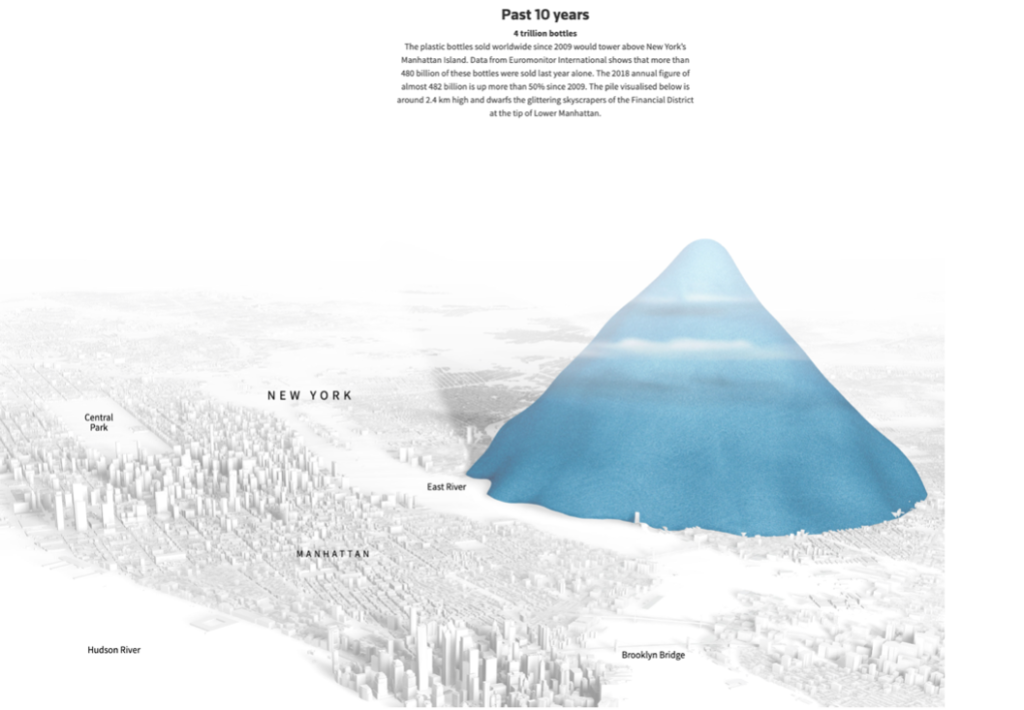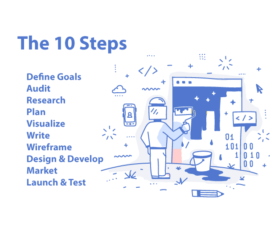Savvy science marketers want to create a distinctive visual identity for their brand. However, even as everyone strives to stand out, certain trends have emerged that help create eye-catching and high-converting ads, websites, and social media profiles.
Below, we showcase examples of creativity in science marketing that also demonstrate current trends in design.
#1 – Diversity and Equity
Recent events have highlighted that now, more than ever, it’s important for corporations to lead the way when it comes to diversity and equity. While that leadership can take many forms, a company’s design and visual aesthetics should absolutely be one of them. Marketing to scientists must include material that resonates with unique stories, and journeys of diverse populations is more likely to create impact.
Whether a company is talking about its staff or showcasing its patrons, expect to see more diverse faces, as well as messages of social justice in 2021 and beyond. This will come through whether a company is using photography, or original illustrations in their science marketing materials.
To be clear, the conversation about featuring historically marginalized populations and promoting equity in the creative design for your company should start with leadership examining the values of your company. Once these are clearly delineated, with actionable plans on how your company will deliver, your design teams should then be conscious of weaving these into creative marketing assets.
Below are two examples of how science companies are showcasing diversity in their creative. The first comes from Pacific Biosciences, and is rather simple, but even the simple act of representation matters. Another image, from the front page of the Gilead Sciences website, promises a “better world” by featuring its commitment to promoting equity in healthcare. This directly speaks to a value that the company has identified as key to their ethos.

At C&EN, we’ve launched a free advertising program to better serve underrepresented groups in the chemical sciences. Learn more about about how to gain visibility for your project or program.
#2 – Bold retro and comic book colors
The mid-2010s saw the serial production of movies culled from Marvel and DC Comics. Most of those movies were huge cultural hits that have continued on today.
Science marketing might tap into popular culture and use those bold “in your face” colors that comic books are well-known for.
Miltenyi Biotec is known for their orange, purple and lime green colors for everything from their cell separation beads to their flow cytometers. It certainly helps them stand out.
23andme also rides the train of bold and bright colors.
According to the agency who helped build the overall branding for the company, the goal was to find elements that were “colorful, not chaotic.”
Describing the palette further, they explain that they “use an analogous color system that creates variety and controlled randomness, but is still unique, recognizable and ownable by 23andMe.”
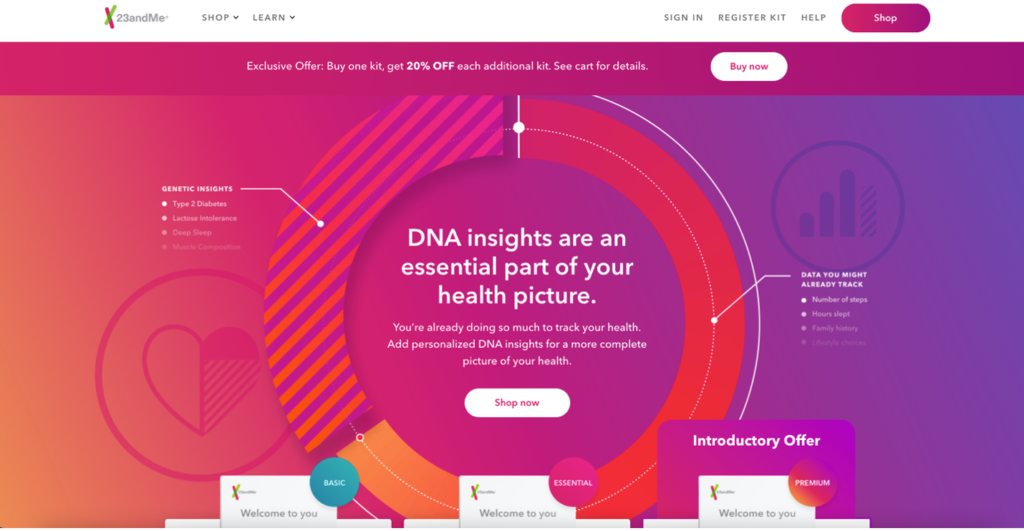
How could an established company implement this approach?
Perhaps your company has already settled on its brand colors and therefore you think there is no going back when it comes to using bold and bright colors for any of your marketing.
This is a wrong assumption. No matter how understated the colors for your brand are, there are brighter hues of that color that can still fall in line with your guidelines. Use those ‘new’ hues in marketing collateral such as brochures, online ads and white papers, to create a well-integrated brand aesthetic.
#3 – Humanity and Life
Google’s viral “Get Back to What You Love” video beautifully captures both the loneliness of 2020 and the excitement of soon reconnecting with friends, family, and colleagues.
This deep human connection is what we’ve all been missing – science audiences included. Sales folks have been unable to stop by labs and offices; business is now almost always done online. So smart brands are upping the human connection in their company’s visuals to offset the physical distancing.
In short, stone cold stock photography is out the door; emotions and personality are in.
This trend helps companies like Luminex Corporation (featured at left) form a connection and, above all else, be memorable.
Incorporate this element by featuring real people within your organization for your website, on social media, and in your email marketing campaigns. Taking this approach with staff has additional benefits for employee engagement and recruitment as well.
Remember, if your photography dictates a specific tone, be sure your copy matches. A more emotional feature image shouldn’t be accompanied by stiff, impersonal jargon.
#4 – Educational Science Illustrations
Another theme to emerge from this pandemic world is the importance and power of visual science communication. Being able to clearly depict how something works and why decisions are made has played a critical role in mitigating the spread of COVID-19. As just one example, look no further than the many science illustrations breaking down how mRNA vaccines function in the human body. Here’s an example of a well-executed infographic on mRNA vaccines by the CDC.
This graphic shown below was published in Bloomberg and does an excellent job of simplifying the concepts behind mRNA vaccines.

Non-designers have taken note!
Creative illustrations can add value as a tool for communicating with many audiences, including more sophisticated scientific groups. Expect to see more of these illustrations in everything from white papers, to PowerPoints, to website graphics.
Pacific Biosciences included the illustration below in a recent blog post on DNA extraction that supports better sequencing results.
A great way to take this back to your own brand is to create a set of icons, using brand colors, that your entire company can use.
In a slightly different take, Miltenyi Biotec created the Happy Cell series that is designed to educate buyers on their products for different immune cell populations.

These also serve as educational (and entertaining) mascots for the company.
Does your company have a mascot? Does it make sense for you to have one?
If so, explore a concept that represents the company’s goals and would resonate with your target audience.
#5 – Data Visualization
A picture is worth a thousand words. It’s not just an over-used adage; it’s true.
Technological advances over the last few decades have allowed scientists to analyze and glean incredibly useful insights from large data sets. But sharing the meaning of data to both internal and external audiences is not always a task fit for words. A smart way to provide context to the data and make it digestible is to present it as a visualization.
This includes companies that are inherently visual, such as Vizgen – which focuses on the microscopy of the cell’s transcriptome at a single cell resolution – but many science companies have a data story to tell.
To use this in your brand’s marketing, think about data you already have. This could be on:
- Your customers
- The types of institutions that use your solution
- The impact of your solution on human health, the environment, the economy, etc.
Next, how can you use that data to tell a relevant, memorable story that connects with your audience?
An example of visualizing data and using that to tell an impactful story is the image at right from Reuters Graphics.
It displays the impact of plastic bottles on the environment over the past decade. The image shows how the 4 trillion plastic bottles that were sold in a 10-year period would tower over the skyscrapers of New York City if they were physically stacked.
The metaphor is key here. By taking something that everyone knows (here, the size of a city) and putting it in context of a specific problem, the information resonates.
How could you successfully incorporate this approach in to your marketing materials? Find a metaphor that would resonate visually with your audience and tie it back to the problem that your product or service solves.
Closing thoughts
If you are looking to infuse life into material that markets to scientists, you can incorporate at least one of these creative trends in science marketing into your designs. Doing so will in turn create a more authentic experience for your brand and audience, and introduce a “wow factor” that doesn’t have to stray too far from your brand and business messaging.
Keywords: branding, data, design, diversity, employer brand, marketing to scientists, sales collateral, trends, visualizations
 Subscribe
Subscribe
